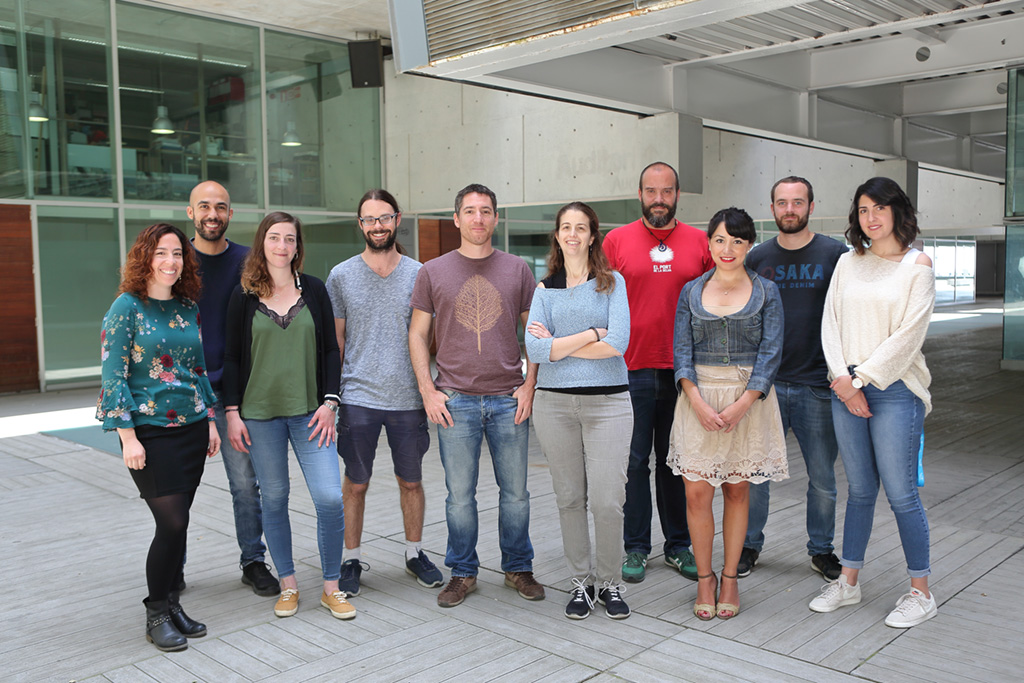Vigevani L, Gohr A, Webb T, Irimia M, Valcárcel J.
“Molecular basis of differential 3′ splice site sensitivity to anti-tumor drugs targeting U2 snRNP.”
Nat Commun, 8:2100 (2017).
Burguera D, Marquez Y, Racioppi C, Permanyer J, Torres-Méndez A, Esposito R, Albuixech-Crespo B, Fanlo L, D’Agostino Y, Gohr A, Navas-Perez E, Riesgo A, Cuomo C, Benvenuto G, Christiaen LA, Martí E, D’Aniello S, Spagnuolo A, Ristoratore F, Arnone MI#, Garcia-Fernàndez J#, Irimia M#.
“Evolutionary recruitment of flexible Esrp-dependent splicing programs into diverse embryonic morphogenetic processes.”
Nat Commun, 8:1799 (2017).
Tapial J, Ha KCH, Sterne-Weiler T, Gohr A, Braunschweig U, Hermoso-Pulido A, Quesnel-Vallières M, Permanyer J, Sodaei R, Marquez Y, Cozzuto L, Wang X, Gómez-Velázquez M, Rayon T, Manzanares M, Ponomarenko J, Blencowe BJ#, Irimia M#.
“An atlas of alternative splicing profiles and functional associations reveals new regulatory programs and genes that simultaneously express multiple major isoforms.”
Genome Res, 27:1759-68 (2017).
Albuixech-Crespo B, Lopez-Blanch L, Burguera D, Maeso I, Sánchez Arrones L, Moreno-Bravo JA, Somorjai I, Pascual-Anaya J, Puelles E, Bovolenta P, Garcia-Fernàndez J#, Puelles L#, Irimia M#, Ferran JL#.
“Molecular regionalization of the developing amphioxus neural tube challenges major partitions of the vertebrate brain.”
PLoS Biol, 15: e2001573 (2017).
Muñoz MJ, Moreno NN, Giono LE, Cambindo Botto A, Dujardin G, Bastianello G, Lavore S, Torres-Méndez A, Menck CFM, Blencowe BJ, Irimia M, Foiani M, and Kornblihtt AR.
“Major roles of cyclobutane primidine dimers, nucleotide excision repair and ATR in the alternative splicing response to UV irradiation.”
Cell Reports, 18: 2868–79 (2017).
* Co-first author # Co-corresponding author.

![Fig. 1 The functional evolution of an epithelial-associated alternative splicing factor (Esrp) across multiple scales of complexity in deuterostomes was shown to follow an hourglass-like model, in which the functions at the molecular (bottom) and organismal (top) levels are highly flexible, but are much more constrained at the intermediate cellular level. [Burguera et al, Nature Comm 2017]](https://annualreport2017.crg.eu/wp-content/uploads/2018/06/m-irimia-fig-01.jpg)
![Fig. 2 We released VastDB (http://vastdb.crg.eu), the most comprehensive and data-rich database of alternative splicing events published so far. In addition to filling a major need in the field of alternative splicing, the analysis of these datasets uncovered a novel regulatory type of AS events (termed PanAS), which are alternatively spliced in virtually all cell and tissue types, even at the single cell level. These events, which are enriched in DNA binding proteins and transcriptional regulators, provide an orthogonal functional layer to the most widely studied tissue-specific AS events. [Tapial et al, Genome Res 2017]](https://annualreport2017.crg.eu/wp-content/uploads/2018/06/m-irimia-fig-02-600x400.jpg)